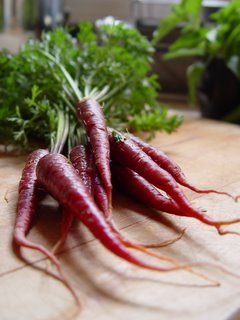
Writing on the occasion of the 34th consecutive rainy day in the bay area. And let the record show, I
grilled. Short ribs are something of a staple here at consumptive HQ. I usually lean toward the
Zuni Cafe Cookbook recipe. Instead of porter, I use New Belgium Brewing Company's
1554 Black Ale. Have also been known to prepare them a la
Mario Batali (use the cheapest barolo you can find). I know that the secret to short ribs is in the browning.
After a recent stretch of short ribs, beef cheeks, and chuck roast my wife however let it be known that she is done with braises. So, having braised this batch of
Prather Ranch Beef Short Ribs, I grilled them, and slathered them in a Mole sauce. The mole recipe came from, of all places, the
Chez Panisse Cafe Cookbook.

Grilled, braised meats figure in the cooking of many cultures. Carnitas leaps to mind, and Doug Stonebreaker of Prather Ranch recently recommended a milk-braised pork shoulder for grilling. The outer shell of these short ribs was crispy, theinterior was nearly liquified. The closest I've managed to get to the carnitas at
Dona Tomas. The depth and complexity of the mole sauce put this one over the top.

















